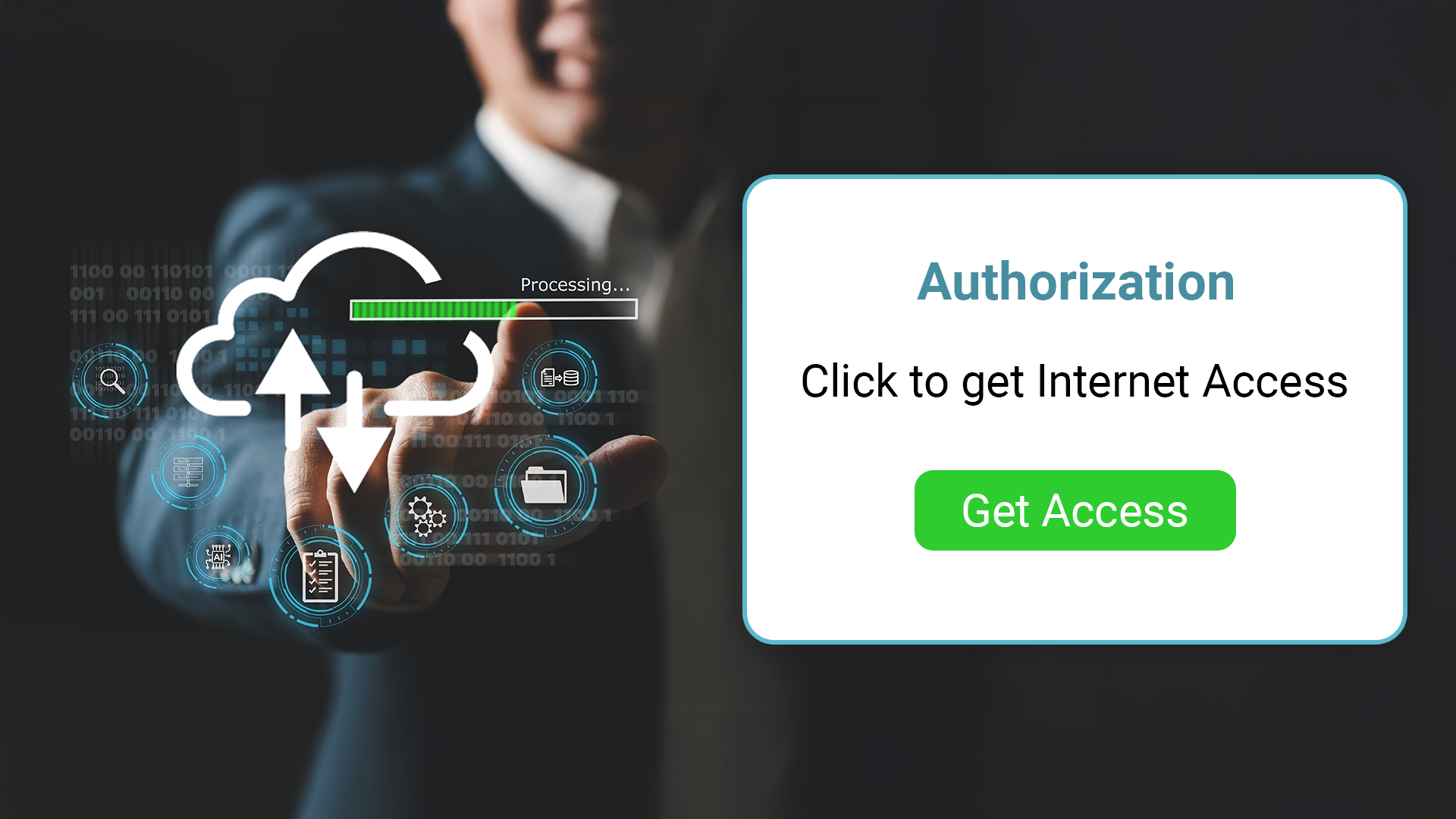Have you ever connected to Wi-Fi at a coffee shop, hotel, or airport and encountered a welcome page asking you to log in or accept terms and conditions? That's a captive portal—a digital gatekeeper that not only secures your network but also opens the door to brand engagement and valuable insights. It's more important to modern network security and user management than you might think.
What is a Captive Portal?
A captive portal is a web page that appears when you first attempt to connect to a public Wi-Fi network. Once you connect to the network, the portal redirects you to a specific page, often for authentication. Only after completing this step can you access the broader network. This process serves as a critical checkpoint, allowing network administrators to ensure secure access while managing the flow of users on the network.
But a captive portal does more than just authenticate users. For businesses, it’s an opportunity to engage customers directly. Venue operators can use the portal to present branded landing pages, offer promotions, and even collect valuable user data for future marketing efforts.
For network administrators, captive portals provide a powerful tool to monitor and control access to the network. They allow for easy management of session lengths, bandwidth usage, and overall security, ensuring that the network is used efficiently and safely.
And for visitors, captive portals streamline the login process, providing a simple and seamless way to connect to the internet—whether it's through a password, an email sign-up, or just accepting terms and conditions.
Authentication: Balancing Security with Accessibility
Modern captive portals implement various authentication methods, each serving different business scenarios.
- One-Time Password (OTP) verification is ideal for high-security settings where one-time codes are sent via SMS or email. This robust authentication method ensures only legitimate users gain access while significantly reducing the risk of unauthorized usage, making it particularly valuable for environments where data protection is paramount.
- Voucher-based systems are common in hotels and conference centers, providing administrators with precise control over access management. These systems generate pre-configured access codes that can be distributed to guests, allowing detailed management of access durations and privileges based on specific user requirements or service tiers.
- Click-through authentication creates a seamless experience in casual environments like cafes, where users simply accept terms and conditions before proceeding. While offering simplicity and convenience, these systems typically incorporate behind-the-scenes safeguards and monitoring tools to maintain network integrity and protect against potential misuse.
Beyond Security: A Tool for Business Intelligence
While security remains paramount, modern captive portals serve as powerful tools for business intelligence. While security remains paramount, modern captive portals also serve as valuable tools for business intelligence. By analyzing usage patterns, organizations can make informed decisions — for example, identifying whether lobby Wi-Fi is busiest in the morning or if guests are lingering longer on certain floors. These insights help optimize operations, all while ensuring user privacy and regulatory compliance.
The system's ability to manage user sessions Administrators can implement bandwidth allocation policies, set access durations to ensure everyone enjoys consistent speeds and prevent abuse.. This level of control ensures consistent service quality while preventing network abuse.
Regulatory Compliance and Legal Considerations
In an era of increasing digital regulation, captive portals play a crucial role in maintaining compliance with various legal requirements. Many jurisdictions mandate that businesses offering public Wi-Fi maintain certain records and implement specific security measures. Captive portals facilitate these compliances by:
- Documenting user acceptance of terms and conditions
- Maintaining necessary access logs
- Implementing required security protocols
- Ensuring proper data handling and privacy protection
Technical Implementation and Best Practices
Successful captive portal deployment requires careful attention to technical details and user experience considerations. The system must maintain robust security while providing a friction-free connection process. Key technical aspects include:
Secure communication protocols ensure data privacy during the authentication process. This includes implementing HTTPS encryption and secure session management to protect user credentials and personal information.
Load balancing and scalability features allow the system to handle varying numbers of concurrent users without degrading performance. This becomes crucial for airports, hotels, or shopping centers where traffic spikes are common.
Integration capabilities with existing network infrastructure ensure smooth operation within the broader IT ecosystem. This includes compatibility with various devices and operating systems, as users may connect through smartphones, laptops, or tablets.
The Evolution of Network Access Control
As technology advances, so do captive portals. Modern implementations increasingly incorporate AIfor threat detection, identifying anomalies and user behavior analysis. This evolution enables more sophisticated security measures while maintaining user convenience.
On the business front, captive portals can seamlessly integrate with Customer Relationship Management (CRM) tools and marketing software, offering a more personalized experience for users. For instance, upon signing in, guests might be greeted with a custom welcome page displaying local offers or restaurant specials, tailoring the experience to their preferences and location. These integrations not only improve user engagement but also provide businesses with valuable insights to optimize their services and marketing strategies.
Customized Captive Portals with io Pass
Whether you’re a business owner aiming to provide secure Wi-Fi to your guests, an IT professional managing network integrity, or a user accessing the internet, a captive portal is a vital tool. It offers a balance between secure network access and an opportunity for enhanced customer engagement.
io Pass, from IO by HFCL, brings advanced captive portal solutions that prioritize both security and a personalized user experience. With powerful customization options, io Pass enables businesses to craft a branded, welcoming login page that creates an engaging first impression. Whether deployed in hotels, retail spaces, or public venues, io Pass’s flexible architecture adapts to various environments, allowing businesses to maintain control while offering a smooth, branded Wi-Fi experience. Perfect for businesses of all sizes, io Pass elevates both security and user experience with every connection.




.svg)
















.png)